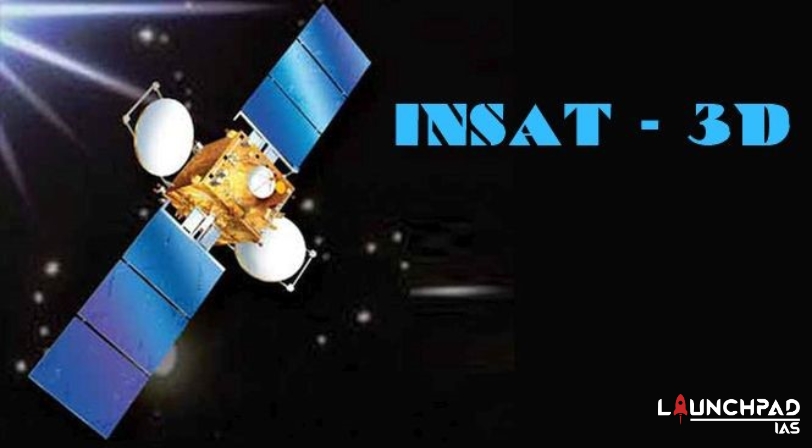Recent context:
- In recent times, North India, including states like Bihar, Uttar Pradesh, Uttarakhand, Haryana, Delhi, and Punjab, has been grappling with heavy fog, affecting daily life and transportation.
- To keep the public informed, the India Meteorological Department (IMD) utilizes advanced satellite technology, particularly imagery from INSAT 3D and INSAT 3DR satellites.
- These satellites play a crucial role in monitoring and predicting weather conditions, providing valuable data for meteorological observations.
INSAT 3D:
- INSAT-3D is a meteorological satellite of ISRO.
- An exclusive next-generation mission designed for enhanced meteorological observations and monitoring of land and ocean surfaces for weather forecasting and disaster warning.
- The mission goals call for a significant technological improvement in sensor capabilities as compared to earlier INSAT missions. The meteorological payload features an imager and a sounder.
- INSAT-3D was launched as a passenger payload on July 25, 2013, on an Ariane-5 ECA vehicle from Kourou, French Guiana.
- INSAT-3D was deployed into an elliptical GTO (Geosynchronous Transfer Orbit).
Main objectives:
- Monitor earth’s surface and carry oceanic observations and also provide data dissemination capabilities
- Provide BSS (Broadcast Satellite Services) through two S-band transponders.
- The mission and its applications involve technical and scientific cooperation between the following partners in India and the USA
- Ministry of Earth Sciences(MoES) / India Meteorological Department (IMD) and
- NOAA /NESDIS (National Oceanic and Atmospheric Administration / National Environmental Satellite Data and Information Service)
INSAT-3DR
- It is an advanced weather satellite
- Launched by GSLV-F05
- It will supplement the services of INSAT-3D
- It is placed in the Geo Stationary Transfer orbit
Payloads in INSAT-3DR:
- Multi-Spectral Imager: It would generate images of the earth every 26 minutes to provide information on various parameters, sea surface temperature, snow cover, cloud motion winds.
- Sounder: It will provide information on temperature and humidity.
- Data-Relay Transponder: It will be used for receiving meteorological, hydrological, and oceanographic data.
- Satellite Aided Search and Rescue Transponder: It will be used to pick up and relay alert signals originating from distress beacons of aviation, and maritime, among others.
How does the INSAT (Indian Satellite) System help In Weather Analysis?
Sophisticated Imaging Technology: INSAT satellites such as 3D and 3DR are equipped with RGB imagers, which play a crucial role in identifying various meteorological phenomena. They do this by analyzing solar reflectance and brightness temperature across different wavelengths.
Geostationary Orbit Positioning: Positioned in geostationary orbits, INSAT 3D and 3DR consistently cover the Indian region, providing vital, continuous weather monitoring.
Round-the-Clock Weather Tracking: These satellites feature ‘day microphysics’ and ‘night microphysics’ capabilities, enabling them to track weather changes throughout the day and night for more thorough surveillance.
Distinguishing Snow and Clouds: INSAT satellites are adept at differentiating between snow and clouds based on their specific spectral reflectance, which is key for precise weather forecasting.
Improved Weather Forecasting Accuracy: Utilising both daytime and nighttime data, these satellites aid in better tracking of cyclones and thunderstorms, thereby improving early warning systems.
Enhanced Radiometer Features: Newer satellites like INSAT 3DR are equipped with upgraded radiometers, offering higher spatial resolution and better functionality than earlier versions like Kalpana 1 and INSAT 3A.
Detailed Atmospheric Analysis: The atmospheric sounders on these satellites measure temperature, humidity, and water vapor levels, providing comprehensive atmospheric profiles crucial for weather analysis.
Technological Advancements in New Satellites: Each new satellite in the INSAT series, including INSAT 3DR, comes with advanced features like an improved VHRR, sounder, and additional transponders, continually enhancing India’s weather monitoring capabilities.


